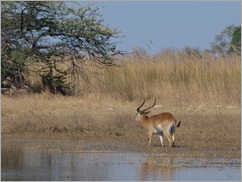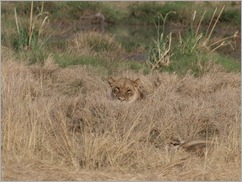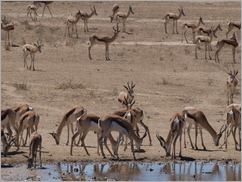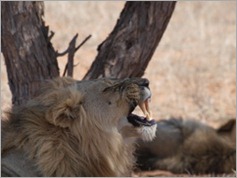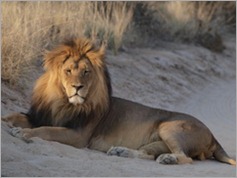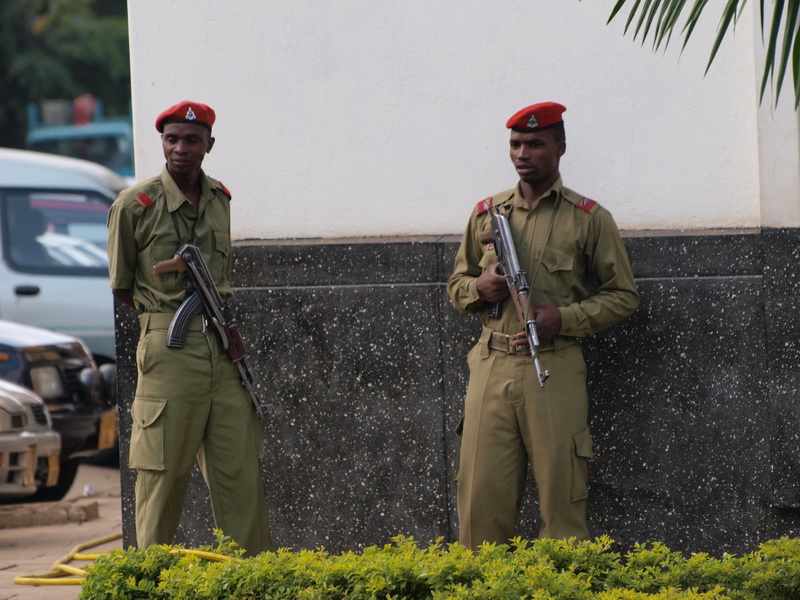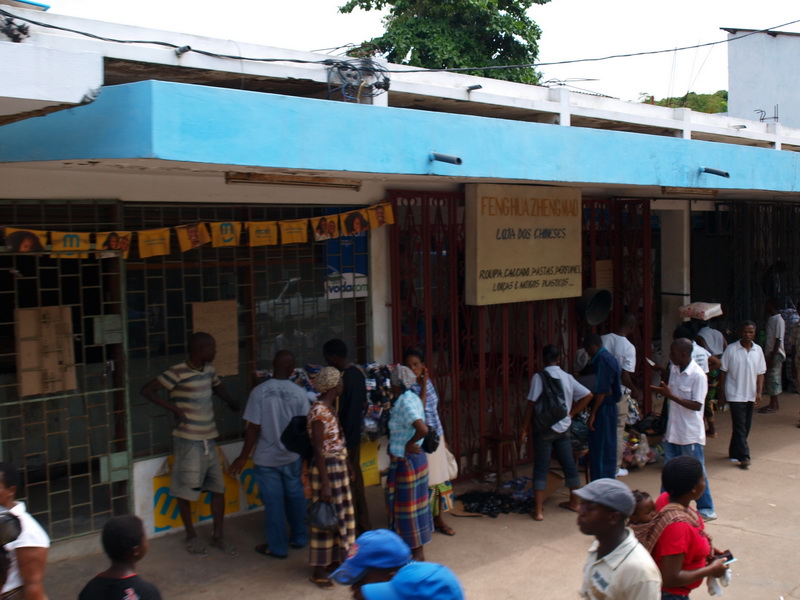We left Hwange National Park and headed for the remote Botswana border at Pandamatenga. When we arrived at the Zimbabwe side there was only one guy around who seemed to just man the boom gate. The customs guy turned up a few minutes later and the immigration guy probably after 10 minutes smelling freshly cleaned. I am sure he must have been working and needed to wash and change before he appeared. The police representative also had to be called from their house. Chatting to them it seems that this border crossing may not get any cars at all and at best maybe a few each day. We drove to the Botswana side where the officials were all sitting out on the verandah. Our passports were stamped but when we tried to do the paperwork for the car the lady was not around so they told us just to go. Bargain as you are supposed to pay some taxes etc for the car.
Next stop was Kasane for some money, fuel (which we didn’t get for 3 days) and food. In typical African style there was no diesel to be had anywhere near Kasane the day we arrived. No problem, we should have enough although we wished we hadn’t donated the 20L in our jerry can to Hwange National Park so they could run the pump at Deteema Dam. The next day we came back into to town to try again for fuel and beer. Nope, can’t buy any alcohol on a Sunday in Botswana. Diesel – one place was expecting a delivery but didn’t know when. The second place was in the process of getting a delivery but it would be 4 hours before they could pump it and we wanted to get back into the park before then. The third place had diesel but no power to pump it! As they say – This Is Africa! On our third day of trying we finally managed to fill our tank.
As it is peak season we were unable to book a campsite at Ihaha in Chobe so had resigned ourselves to staying in Kasane and doing day trips. Whilst we were in the park office asking for some info on our future plans a group of people walked in. (Maisy at the gate is extremely helpful by the way). We started to chat to them and found out they had just picked up their hire car but as there was no fuel in Kasane they could not fill it. Anyway, in the end they said that we could share their campsite in Ihaha whilst they were there for the next 2 nights – awesome! After paying our park and campsite fees we ventured into Chobe.
Wow Chobe is very different this time of year. When we have visited in the past it has been February or March and the park has been very green with lots of grass and bushes. At this time of year all the grass is gone and there is very little greenery. It is amazing to think that each year everything greens up and grows yet the ground is pretty much just sand. The Chobe River still has a fair amount of water in it but we have seen it right up to the river road but now it is nowhere near it. The roads are quite sandy in parts which we did not realise when we entered and therefore we had not let our tyres down. Oh well, we’ll deal with it when we get stuck, which we did quite quickly. Not a problem as we quickly let our tyres down and were on our way again in a few minutes.
As usual there were heaps of elephants, especially around the river. I think they are probably the most placid elephants you’ll encounter. They let you drive right next to them and don’t bother to move even when they have babies with them. On our last game drive we saw a group of 9 lions lying in the shade on the riverbank. We decided we would sit and watch them to see if they got up and did anything. After a while they started to stir and one of the lionesses, half asleep still I’m sure, took off after an impala. She was kidding herself if she thought she had any chance of catching it, but it was cool to see her take off and chase it. One night in camp a honey badger ran past us which is something we have never seen before so that was pretty exciting. We also saw kudu, warthog, zebra, sable, roan, topi, giraffe, impala, heaps of birds, crocodile, hippo, baboon, banded mongoose, buffalo, bushbuck and red lechwe (another first for this trip).
Ihaha Camp is in a nice spot on the river although not too many animals came near camp whilst we were there. We did though have bushbuck, baboons, buffalo, impala and elephant walk past our tent during the night. Only hyena and baboons were heard during the night, no lions unfortunately. The camp has nice, clean ablutions with slightly warm showers. Each site is large and a reasonable distance from the next one.
For those wanting to camp at Ihaha but have no booking this is what we did and saw. On the first 2 nights we managed to share a site with another group who had booked. (Hang around the gate and see what you can organise). Our third night we stayed in Kasane. For our fourth night we spoke to one of the guys that works there a couple of days in advance and explained that we had a really long drive from Chobe to Third Bridge and asked whether we would be able to camp somewhere at Ihaha to shorten the drive. Originally he said no but relented and told us to just turn up. Sure enough when we showed up at least 3 of the 10 sites were unoccupied although they were booked. After talking to the manager it seems that this is a frequent occurrence. If they were full they said they could put us on one of the other larger sites anyway. So my suggestion is to turn up there at 6pm and ask if you can stay. If they are adamant and say no you can make it back to the gate in an hour or so but you will be after closing time, but they do night drives so there will be someone at the gate. Chances are though there will be a vacant site or they will double you up.
Chobe is definitely worth a visit, probably at any time of the year, At this time of year though most animals seem to hang around the riverfront so you will spend most of your time driving along the roads there.














